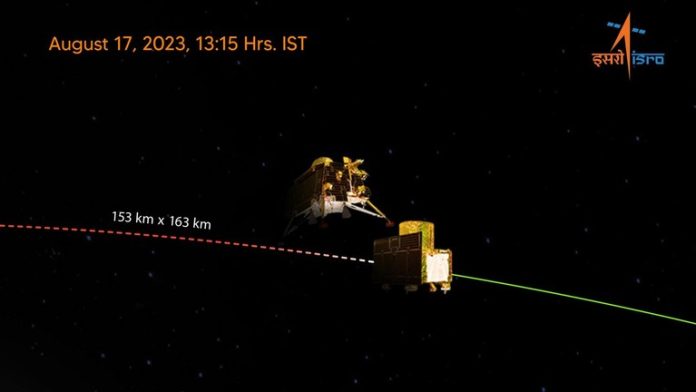NewsRescue
On Thursday, the lander module of India’s lunar mission successfully split from the propulsion module of the Chandrayaan-3 spacecraft, according to the Indian space agency.
The Vikram lander, named after Dr. Vikram A Sarabhai, widely regarded as the founder of Indian space exploration, will now continue its solo mission to the Moon, while the propulsion module will linger in lunar orbit for months or even years.
The separation of the lander module is a significant achievement in India’s third lunar mission. According to the Indian Space Research Organization (ISRO), the spacecraft performed the final lunar-bound orbit reduction operation on Wednesday, ahead of Chandrayaan-3’s Moon landing attempt on August 23. The next stages of the mission will require activating and confirming the onboard instruments, including three critical ones.
“Lander Module Successfully separates from Propulsion Module today (August 17, 2023). The next Lander Module (Deorbit 1) maneuver is scheduled for tomorrow (August 18, 2023) around 1600 hrs IST,” the ISRO said in a tweet.
Former ISRO scientist Mylswamy Annadurai told the ANI news agency that when the mission lands on the Moon it “will definitely be the day for India to rejoice.”
A gentle landing for Chandrayaan-3 on the lunar surface would place India among a small group of nations that have accomplished the accomplishment, including Russia, the United States, and China. Russia also has a Moon mission in space, Luna-25, which is scheduled to land on the lunar south pole by August 21.
India’s Chandrayaan-2 project launched an orbiter in 2019, but its lander and rover were destroyed when it plummeted to the Moon’s surface, leaving a crater near where the current mission is expected to land. Chandrayaan-3’s goal is to successfully demonstrate a soft landing on the lunar surface, demonstrate Vikram’s mobility on the Moon’s terrain, and conduct scientific investigations all at the same time.
Previous missions to the Moon have primarily concentrated on the equatorial region due to its favorable scenery and operational conditions. The lunar southern pole, which is being pursued by both India and Russia, is still largely unexplored area.
The shadowed surface area is far larger than that of the Moon’s northern pole, and experts believe this increases the likelihood of water there. Chandrayaan-1, India’s first lunar mission, launched in 2008 and identified water molecules on the arid lunar plain, demonstrating that the Moon has an atmosphere during daylight hours.





